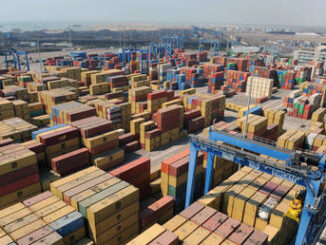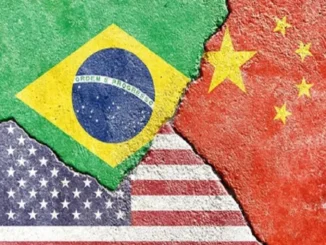
In a bold move echoing his first-term trade policies, President Donald Trump has imposed tariffs and sanctions on India, targeting its massive imports of Russian crude oil. These measures, including a 25% tariff on certain Indian imports tied to Russian energy purchases, aim to curb India’s role in circumventing Western sanctions on Russia amid the ongoing Ukraine conflict.
Trump argues that India’s discounted purchases of Russian oil undermine U.S. efforts to isolate Moscow economically. However, this strategy risks backfiring spectacularly, accelerating the de-dollarization of global energy trade and weakening the U.S. dollar’s hegemony. By examining India’s 2025 oil imports, its refining powerhouse, the lucrative profits from Russian crude, and the shift to non-dollar currencies in Russia-India dealings, it becomes clear how these U.S. actions could boomerang, eroding America’s financial dominance.
India’s Surging Oil Imports:
Russia Dominates the LandscapeIndia, the world’s third-largest oil consumer and importer, relies on foreign crude for over 85% of its needs.
Are you Paying High Taxes in New Jersey, New York, or California?
In 2025, projections indicate India will import between 4.7 and 5 million barrels per day (bpd), with demand expected to grow by 3.2%—outpacing China’s 1.7%.
This totals around 5.74 million bpd in consumption, rising to 5.99 million bpd by 2026.
The International Energy Agency (IEA) forecasts global oil demand growth of 680,000 bpd in 2025, with India accounting for a significant share.

Russia has emerged as India’s top supplier, capturing about 37% of imports in the first half of 2025—equating to roughly 1.8 million bpd.
This marks a continuation from 2023, when Russia supplied 39% of India’s crude.
In the first seven months of 2025 alone, India’s Jamnagar refinery—operated by Reliance Industries—imported 18.3 million tonnes of Russian oil, a 64% year-on-year surge.
While U.S. exports to India have risen dramatically, jumping 51% following Trump’s return to office and reaching 0.36 million bpd since June, they still pale in comparison to Russian volumes.
Other sources like Iraq, Saudi Arabia, and the UAE fill the gap, but Russia’s discounted Urals crude—often 5% cheaper than alternatives—remains irresistible for cost-conscious Indian refiners.
Trump’s tariffs seek to disrupt this flow, but market bets suggest they’re hollow; Indian importers show little sign of pivoting away from Russia.
Instead, state-owned refiners resumed Russian purchases in September-October 2025 after a brief July-August pause, underscoring the resilience of these ties.
India’s Refining Juggernaut: Turning Crude into Global Exports and Profit
India’s refining sector is a behemoth, with a current capacity exceeding 250 million metric tonnes per annum (MMTPA), set to expand by 20% to 300 MMTPA by 2028.
Major players include Indian Oil Corporation (IOC) with nine refineries totaling significant capacity, Reliance Industries’ Jamnagar complex (the world’s largest at over 1.2 million bpd), and Nayara Energy.
Despite ambitious targets, actual growth has lagged, rising only 5% against a planned 69%, due to climate concerns and bottlenecks.
Still, the sector processes over 5.6 million bpd, enabling India to export refined products like diesel, gasoline, and jet fuel to global markets.
These exports are booming: In 2025, India is among the top global exporters of refined petroleum products, with Europe as the primary destination (absorbing $18.4 billion worth).
The U.S., Africa, and Asia also receive significant volumes, with transportation fuels comprising 84% of exports.
Private refiners like Nayara exported nearly 3 million tons in the first half of 2025, often derived from Russian crude.
The IEA projects India’s product exports to reach 1.4 million bpd by mid-decade before dipping slightly.
The profits are staggering. Indian refiners, particularly private ones like Reliance and Nayara, have reaped windfalls from cheap Russian crude. In 2025, savings from discounted Russian oil have largely accrued to private firms, which export refined products rather than subsidizing domestic markets like state-owned entities (e.g., BPCL, HPCL).
Reliance alone attributes about 30% of its crude intake to Russia, fueling outsized profitability amid global price volatility.
The U.S. has accused India of “profiteering” from this trade, estimating excess gains during the Ukraine war.
With Russian crude comprising 32% of India’s imports on average, these margins have turned India into a refining hub, indirectly supplying Western markets with processed Russian oil—despite EU bans on direct imports.
The Shift to Non-Dollar Trade: Russia and India Ditch the USD
A pivotal development is the complete pivot away from the U.S. dollar in Russia-India energy trade. As detailed in a recent analysis, most bilateral transactions now use a rupee-rouble payment system, bypassing the dollar and euro to resolve earlier bottlenecks.
This bespoke mechanism has kept oil flowing despite Western sanctions, with Russia expanding ties to include refined products, coal, LNG, and upstream equity in projects like Vankor and Sakhalin-1.
India’s state refiners’ resumption of purchases highlights the system’s efficacy, even as China acts as a swing buyer for diverted cargoes.This de-dollarization is part of a broader BRICS trend, where intra-group trade in non-USD currencies has reduced dollar usage to about one-third of previous levels.
Increased BRICS trade accumulates reserves in alternative currencies, decoupling from dollar fluctuations.
Implications for the U.S. Dollar: A Self-Inflicted Wound
Trump’s tariffs could accelerate this shift, harming the dollar in a classic boomerang effect. By pressuring India, the U.S. incentivizes further de-dollarization, reducing global demand for dollars in energy trade—the lifeblood of petrodollar dominance.
A potential BRICS currency or decentralized payment system could weaken U.S. sanctions’ bite, eroding the dollar’s reserve status. The dollar will remain strong as long as we do not weaponize the U.S. dollar as leaders in the past have over-sanctioned. This brings up a great point that President Trump needs to use a carrot or potential new business to get Putin to end the Ukraine war rather than sanctions. Sanctions do not work as intended – Irina Slav. And she is spot on.
As BRICS nations like Russia and India trade in rupees and roubles, FX reserves diversify, threatening U.S. economic leverage.
This could lead to higher U.S. borrowing costs, inflation, and diminished global influence.
In essence, while aiming to punish India, these policies may hasten the dollar’s decline, proving that in the interconnected world of energy geopolitics, isolationist tactics often rebound. As India doubles down on Russian ties and non-dollar settlements, the U.S. risks watching its currency’s supremacy slip away.
Avoid Paying Taxes in 2025
Crude Oil, LNG, Jet Fuel price quote
ENB Top News
ENB
Energy Dashboard
ENB Podcast
ENB Substack







